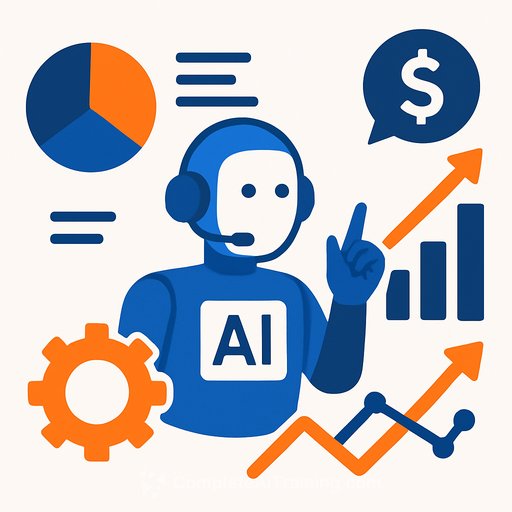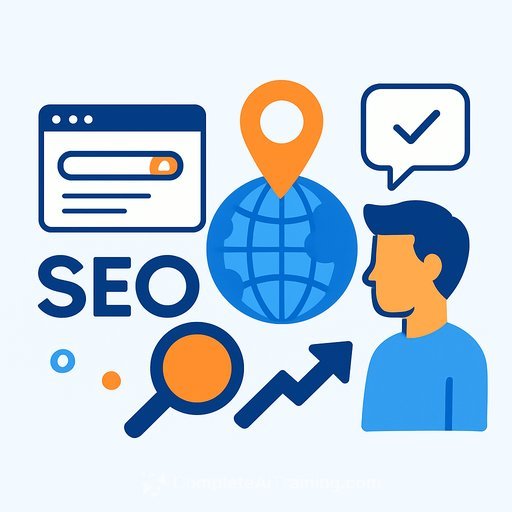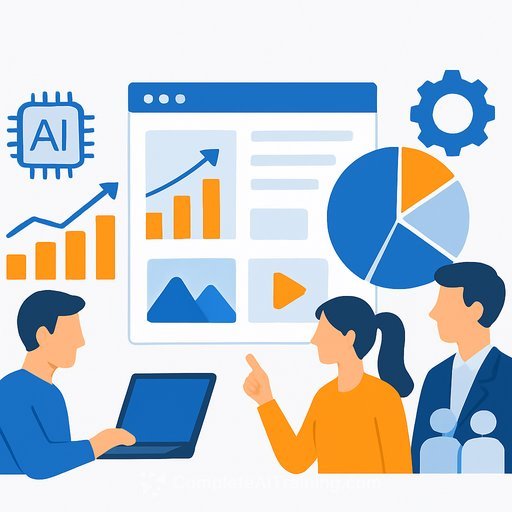Will Braze's New AI Suite Reshape Its Edge in Customer Engagement?
At Forge 2025, Braze introduced BrazeAI - a suite of generative and agentic AI features - plus real-time data triggers, WhatsApp Commerce capabilities, and integrations with Jasper and Snowflake Cortex AI. The standout: configurable AI agents that let teams bring their own models into lifecycle flows. This gives enterprise marketers flexibility to personalize at scale without being boxed into a single vendor model.
What matters for marketers
- Faster experimentation: Test content, channel, and timing with AI agents that learn from results.
- More channels with intent: WhatsApp Commerce enables conversational browsing and transactions inside chat.
- Data-in, decision-out: Integrations with Snowflake and Jasper reduce friction between data, content creation, and orchestration.
Agentic personalization: the practical upside
BrazeAI Decisioning Studio allows teams to deploy and customize agents that decide audience, message, channel, and send time. "Bring-your-own-model" means you can use an internal LLM for sensitive use cases and a third-party model for lighter tasks. That flexibility lowers lock-in risk and can improve compliance and quality control.
If your first-party data already lives in a warehouse, the Snowflake Cortex tie-in can simplify data access and reduce ETL overhead. On the channel side, WhatsApp Commerce opens the door to richer, transaction-ready conversations where customers already spend time.
Differentiation vs. legacy vendors
Most legacy stacks rely on static rules and batched sends. Agent-driven decisioning shifts the heavy lifting to learning systems that adapt in near real time. For enterprise buyers, that's a clear reason to switch: better lift with fewer manual workflows, plus the option to govern model choice and content policies.
This product direction also strengthens Braze's position in complex deals where data security, approvals, and brand control matter. Expect higher win rates where personalization, speed to insight, and multi-channel coordination are deal breakers.
Margin outlook: where efficiency could show up
- Lower campaign ops load due to automated decisioning and real-time triggers.
- Faster lift per message as agents optimize send time, channel, and creative.
- BYOM can shift model costs to customer infrastructure, easing vendor COGS in some scenarios.
- Watch model inference costs and guard against over-send to protect gross margin.
Key risk: OfferFit integration
The main execution risk is merging OfferFit's tech into the core platform. Unexpected costs, timeline slippage, or overlapping features could pressure profitability. Teams should watch for clarity on unified roadmaps, migration paths, and how inference costs are allocated across features.
High-impact use cases to run first
- Lifecycle win-back and reactivation flows with agent-based channel selection.
- WhatsApp product discovery, back-in-stock alerts, and assisted checkout.
- Triggered messages tied to real-time events (price drop, usage milestone, cart activity).
- Creative testing with AI-generated variants and strict brand rules.
What to set up before you scale
- Data readiness: Clear consent flags, event taxonomy, and identity resolution.
- Agent policies: Guardrails for tone, claims, escalation, and compliance.
- Approval flows: Human-in-the-loop for launches and sensitive segments.
- Measurement: Holdouts and lift studies by segment, channel, and tactic.
Metrics that matter
- Incremental revenue per 1,000 sends and net lift vs. control.
- Time-to-launch for new flows and variants.
- Share of messages decided or written by AI agents.
- Override rate (how often humans correct agent decisions).
- LTV, payback period, and channel mix changes post-AI adoption.
Investor snapshot (from the company's narrative)
- Revenue target: $1.0B by 2028 (requires ~17.9% CAGR).
- Earnings target: $133.0M by 2028, a $236.9M swing from -$103.9M today.
- Implied fair value: $45.11, suggesting ~72% upside to the current price noted in the source.
This perspective highlights how product differentiation and AI adoption could influence both revenue growth and margin expansion. It is a product and strategy view for marketers, not financial advice.
Other perspectives
Community estimates vary widely, with fair values spanning US$24.98 to US$33,504.83. The common thread: future upside hinges on adoption of BrazeAI features, while integration risks remain a real challenge for profitability.
How marketing teams can capitalize now
- Prioritize one or two high-volume flows for agent-based decisioning and measure lift.
- Pilot WhatsApp Commerce with a clear use case and strict, measurable outcomes.
- If you maintain your own models, define when to use them vs. vendor models and why.
- Set quarterly thresholds: required lift to expand, safety triggers to pause.
Your membership also unlocks:






